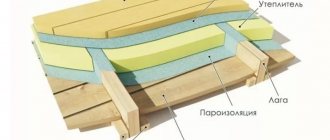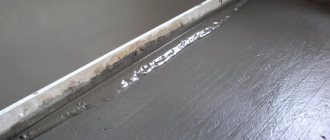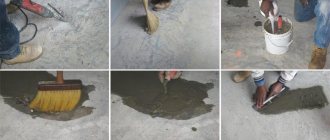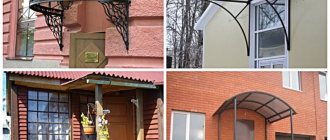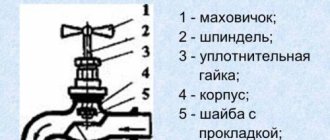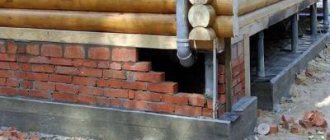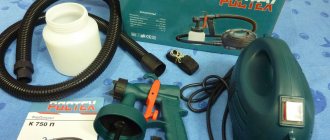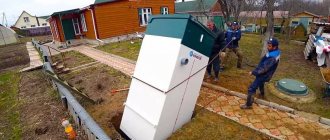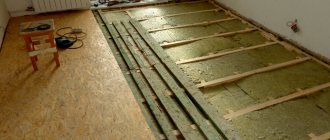At the initial stage of construction of pile-screw foundations, piles are screwed into the ground until they reach the bearing layers located below the freezing line. It is possible to install screw piles with your own hands, in which no specialized tools are required, as well as mechanized installation using various types of equipment for tightening screw piles. Let us consider the common methods of initial construction of SVF in more detail.
Do-it-yourself installation of screw piles
The necessary equipment for performing the work can be considered:
- shovel;
- sledgehammer;
- level in compliance with three planes;
- lever keys.
When we talk about lever wrenches, we mean devices that can be used to tighten piles. These could be regular pipes
Of course, when deciding to install a pile foundation using screw piles, you need to take into account their size and the so-called human factor. It is better to entrust pipes with large diameters to technology
We recommend watching a video on how to install using a lever without the help of professionals.
The equipment, as well as various installations, facilitate installation when constructing a foundation on difficult soils, where large-diameter piles are simply necessary. The installation for tightening these supports consists of a base, which can serve as a machine, and additional equipment.
The hydraulic rotator can be manual or automatic
In addition to the machine itself you will need:
- hydraulic installation; support jacks;
- work device;
- tilt and rotation drive;
- remote control with which the installation is controlled.
When determining the length of the piles, you need to remember that it must exceed the depth of soil freezing and the level at which the piping will be performed.
Carrying out all the work associated with installing screw piles with your own hands will be facilitated if a device such as a hydraulic rotator is used for the work. This device greatly facilitates screwing the structure with your own hands.
The hydraulic rotator is installed in the body of the hollow pipe and secured there with a locking pin. The prepared pile must be lifted and installed exactly at the installation point. The end of the lever that is attached to the device is held by a person (in some cases, this end is fixed to the ground). The piles are screwed in using a hydraulic station equipped with a gasoline drive, which is turned on and off with a reaction lever.
Watch the video on how to install supports using a hydraulic rotator.
The peculiarity of this device is that, if necessary, it is possible to turn on the reverse and dismantle the installed pile. The speed of rotation and immersion of the pile is controlled by controlling the speed of the gasoline engine. Such equipment is widely used when installing screw piles in difficult field conditions.
Installation
After preparation, it is necessary to draw a plan for the future building and mark where the piles will be placed. He is carried to the ground. Where the piles will stand, dig small holes - this will make the work of screwing in easier.
Manual installation Source small-house.ru
Driving the piles using a meat grinder begins from the corners of the foundation. They will bear the greatest burden. Then screw in the rest and level them in height, focusing on the horizontal level. If the piles cannot be completely leveled, the excess is cut off after installation.
Installation must be carried out strictly vertically. This must be checked periodically during operation. It is important to remember that each pile must have its own “place” - you cannot unscrew one and put another in its place.
You can install structures in several ways:
- Manually;
- Using a drill;
- Special equipment.
The choice of a specific method depends on the size of the structure and soil characteristics.
Design and options of “meat grinders”
“Meat grinders” are a hand-held tool consisting of an electric or hydraulic drive mounted on the head of a pile and a lever system for fixing the tool and transmitting torque to the pile.
The name comes from the torque amplifier (TMA) for the wheel wrench of the truck, nicknamed the “meat grinder”
Torque booster (TCA)
Drive requirements
It is rational to choose a drill of sufficient power as a drive. In the absence of electricity on site, a mobile generator will be required.
The power of the drill must be at least 2 kW; It is also important to have reverse and change the rotation speed.
Of course, you can use a hydraulic motor. But it’s easier to buy a drill, and easier to replace if it breaks. And the portable hydraulic unit needed to operate the engine will hardly be useful to you anywhere else.
Motor drill - can also be used in this design
If you decide to use other motors instead of a drill, they should be no worse.
Gearbox requirements
A gearbox is needed in the design to increase the moment on the pile head and reduce the speed:
- The gearbox must withstand a torque of at least 4500 Nm;
- The gear ratio must be greater than 1:60.
When choosing RCM, give preference to designs with bearings.
Also pay attention to the ease of changing lubricant. It is recommended to change the lubricant after installing 20 piles
After purchasing, fill the gearbox well with new lubricant (there won’t be enough of it). It is recommended to replace the lubricant with a more suitable one: for example, grease for CV joints.
Adapter
The adapter looks like 2 adapter mounts (for a drill and a gearbox) and a frame connecting them together. As picture:
Purpose: so that the gearbox does not rotate relative to the drill. Otherwise, you will have to hold both the drill and the gearbox while working.
Nozzle, levers, etc.
Our pile driver will transmit torque to the pile through the nozzle. The forces on the head are significant and the pile may collapse. And this is marriage.
There are two nozzle options: internal and external. They differ only in that the nozzle is inserted or put on the pile.
The nozzle should have a hole where the finger will be inserted. It's good to make this hole oval.
In order for the pile to rotate in the ground and the pile to be twisted, a lever must be attached to the frame. The lever may have a hinge that allows it to swing up and down, but not left and right. This is necessary for the convenience of driving high piles and controlling them from the ground without platforms.
Video description
You can see manual installation in the video:
It is not difficult to understand how to tighten screw piles. The process consists of several steps:
- A well is drilled to a depth of 50 cm. Its diameter should be 10 cm less than that of the blades.
- The structure with the prepared head is installed and checked with a level.
- Workers take hold of the levers and begin to screw the structure in a circle. During operation, it is necessary to monitor the angle of inclination.
Mechanical option
For structures of large length and diameter, mechanical devices are used. You can buy them or make them yourself.
For production you will need:
- Drill, motor drill or any power tool with a power of 2 kW or more;
- A gearbox with a reduction number, for example, a wrench with a torque amplification mechanism. A 4.7 kNm gearbox is sufficient;
- Adapters for connecting the power unit, pile and gearbox output;
- Lever for support.
The adapter between the drill and the gearbox can be made from a head and a bolt: the first is fixed to the gearbox, the bolt is inserted into the drill chuck. The adapter between the pile and the gearbox is made from a head, which is fixed to the pile. Its tip must coincide with the gearbox.
Special equipment for installing screw piles
There is a wide variety of equipment for quick and convenient installation of a pile-screw foundation. If you use piles with a diameter of up to 108 mm, then manual installation, for example, as in the photo, will help facilitate the process.
Photo 3 - Manual installation for screwing piles
But, if the diameter of the piles is 133 mm or more, then it is difficult to install it manually. Then large special equipment, such as a hole drill, will come to the rescue. This is a modern all-terrain unit that can self-propel itself to a construction site off-road in any weather and will quickly complete a large amount of work. A pit drill can be used in hard-to-reach places and on areas with difficult terrain.
Photo 4 - Self-propelled pit drill
This technique will screw a pile into any soil in one minute. Pit drills differ in size, power and modification. There are other drilling rigs on which special drilling equipment is attached and larger-scale work is carried out.
Screwing methods
The initial stage of construction involves screwing in pile elements to layers located below the freezing point. This provides the structure with the necessary stability even when erected in areas with complex terrain.
Installation is carried out using one of three methods:
Each option has its own advantages and disadvantages, and requires certain skills and tools for implementation. Let's look at them in more detail.
Manual installation
Mechanical installation
Mechanical installation is used by large companies specializing in large-scale projects that require a large diameter of the support and its wrapping to a great depth. The main advantages of the method are:
laying the foundation in a short time;
attracting a minimum number of workers;
automated control over the immersion angle.
However, there are also disadvantages: for example, in order to freely place the equipment, it is first necessary to clear the site, and the quality of the task completely depends on the competence of the operator.
Gear unit
safe use - ensured by thoughtful fastening of beams;
convenient transportation - achieved due to small dimensions;
high precision of operations - ensured by an electric drive based on a planetary lantern gearbox for driving screw piles with a drill.
By using this device, you will reduce construction costs and achieve the required quality of foundation work.
- Drill. As oil, it is desirable to be powerful - two or more than one thousand watts. It is desirable that, like oil, it should also be low-speed, having a maximum speed of not three thousand per minute, but 600. Such devices themselves already have a fairly large torque. Nettle will do, that's an option.
Pile driving technology
Installation of the support can be done without special equipment. To tighten the screw supports for a pile foundation manually you will need:
- shovel;
- tape measure and level;
- scrap;
- fittings or pegs and twine for marking;
- hammer or sledgehammer;
- grinder and spare circles for leveling piles in height;
- pipes with a diameter of 50 mm and a length of 2.5 m, which serve as levers;
- special marker for marks on pegs or fittings.
The hole for the pile is made using a garden drill, the diameter of which should be less than the cross-section of the screw supports used. It allows you to check the structure of the soil and identify stones and other obstacles if they are present.
We recommend watching a video on how to choose the right supports for installation.
To install screw piles for a foundation with your own hands, you first need to mark the location of the supports according to the calculations made, using twine and reinforcement. The distance between the piles should not be more than 3 m, otherwise the strength and stability of the foundation will be significantly reduced.
We invite you to read: Decorate the ceiling for the New Year with your own hands
Drilling holes for supports
Further activities for screwing piles include the following types of work:
- Drilling holes according to markings. It is carried out using a garden drill in such a way that the depth of the resulting holes is less than the length of the pile. In some cases, the supports are screwed in without preliminary drilling. This complicates the installation of a pile foundation, but avoids loose soil.
- Twisting. The pile is placed in the hole and a crowbar is inserted into it, having previously secured a construction magnetic level to the support. Then they begin to screw the support, avoiding its displacement. When reaching denser layers of soil, levers in the form of pipe sections are used, evenly distributing the force of influence. How many people are required to install the pile depends on the density of the soil and its diameter. Usually, a minimum of three participants are needed: two screw the support, and the third controls the vertical level and makes timely adjustments. In the same way, the remaining supports for the foundation are screwed into the corners of the building being erected and along its perimeter.
- Alignment. Upon completion of the installation work, the supports are leveled and cut to height using a level. How much will need to be cut? Typically, piles are shortened by about 10 cm, which corresponds to the length of a technological hole that does not have a load-bearing capacity.
- Concreting. To protect the supports from corrosion on the inner surface and strengthen the foundation, they are filled with concrete solution. In this case, the grade of cement should not be lower than M150, and it is advisable to use sand without foreign impurities.
If during screwing in the pile has moved to the side and the depth of the pile has not reached 1.5 m, it should be removed and screwed in again. If there is excessive soil resistance, additional load should be provided, pressing from above on the support.
What will you need?
- Drill. It must be powerful - at least 1000 W. It is desirable that it should also be low-speed, with a maximum speed of not 3000 per minute, but 600. Such devices themselves already have a fairly large torque. For example, this option would be suitable.
- Animator. This is a geared device designed to increase torque tenfold. Used for repairing trucks where it is necessary to tighten bolts and nuts with great force. Truck drivers also call this thing a meat grinder, since it has to rotate the handle in a similar way. May also be called a hand-held impact wrench. For example, this unit would be suitable. As you can see, the price is not very high - it’s cheaper than ordering special equipment. At the same time, it increases thrust by 58 times.
- Welding machine. It will be needed for welding in the manufacture of some devices.
- Steel pipes. You will need a piece about 30 cm long and an internal diameter slightly larger than the external diameter of capless piles. If you have them with heads, then this piece is not needed. Another pipe will be needed to use it as a stop, thanks to which the pile will rotate, and not the meat grinder. Its diameter should be about 4 cm, and its length should be 4-5 meters in order to provide the necessary leverage.
- Channel. You need a piece about 20 cm long and slightly wider than the diameter of the thrust pipe.
- Thick steel plate. It is used in the manufacture of adapters for both piles with and without a head.
- The bolts are hardened and the nuts for them. Used to connect all nodes together. You'll need hardened ones, because regular ones won't hold up. These should be purchased not from fasteners departments, but from auto parts stores.
- Bulgarian. Useful for cutting metal in the manufacture of necessary parts of a structure.
- Nut heads with 1 inch fit. If you are driving piles with or without a head, you will need three pieces. If there is only one type, then two.
Comparisons between screwdriver and drill
To begin with, it is worth understanding the distinctive features of these instruments, because although they both perform a rotational movement, their purposes are different.
A drill is a potentially more dangerous tool than a screwdriver, therefore, when working with it, special safety precautions must be observed - safety glasses, in addition to the usual attentiveness, accuracy and caution.
The choice of operating mode is another difference between the instruments under consideration. In addition to the main one, a drill also has an impact mode, while a screwdriver is regulated only by the spindle speed.
As can be seen from the comparison, the drill is less suitable for working with screws and bolts, however, it can be adapted for this task.
How to assemble and operate?
First you need to refine the multiplier. It has an overly long handle that will get in the way. Therefore, it must be cut down to the level shown by the red line in the figure below.
Now let's make adapters. For piles with a head, we take a steel plate and cut it to the size of the head. Next, we drill holes in it the same way as on the head. And in the middle we weld the nut head with the tetrahedron facing outwards.
To make an adapter for a headless pile, we take a prepared piece of pipe and weld a steel plate to it at the end, to which we then weld a nut head with the tetrahedron facing outward. After this, a through hole is drilled in the adapter, coinciding with the holes of the pile.
You can also weld a loop of reinforcement to the side of the adapter so that you can use the pipe to tighten it manually if suddenly the drill force is not enough, for example, due to excessive soil density. It is advisable to weld a plate under the loop for reinforcement.
To connect the meat grinder and drill, you need to insert a bolt with a suitable size head into another nut head and secure it with welding.
The long pipe will serve as a stop. On its edge you need to drill two holes for the bolts. Two holes are also drilled into the channel at the same distance from each other so that it can be connected to the pipe.
Now, to start working, we make a small hole under the pile so that it can stand on its own, and insert it there. Then, using hardened bolts, we attach a suitable adapter to it. If it is topless, steel reinforcement can be inserted for fixation.
Next, we insert the multiplier into the adapter, and then put a drill on it, in the chuck of which a bolt with a head is already clamped.
Now let's focus. A channel with a pipe inserted into it is screwed to the part of the multiplier handle remaining after sawing, which, if long enough, can simply be held by a partner, or rested against any object firmly stuck into the ground.
That's all. All you have to do is press the start button and the gradual dive will begin.
As you can see, there is nothing complicated in assembling a homemade electric device for tightening screw piles. At the same time, the financial costs will be less than if you call special equipment.
Electromechanical tool
To tighten a pile using this device, it is necessary to install a support in an already drilled hole, having first placed a flange with a tetrahedral groove on its top.
In addition to a homemade electromechanical device, you can use a factory electric machine to perform the work. Standard equipment of the device:
- Electric drill (power from two kilowatts).
- A set of attachments for standard sizes of supports.
- Tilt compensator.
- Set of levers.
Installation of piles using a multiplier
Among the disadvantages of such equipment, one should highlight the relatively large weight. A standard multiplier weighs from forty kilograms. Therefore, you cannot do without an assistant. The second disadvantage is the high energy consumption.
To ensure that the device does not break and the support remains intact, the diameter of the hole should be ten centimeters smaller than the pillar itself. Its depth is a third less. Then the screw pile will stay more firmly in the ground.
How to tighten a screw pile by hand. Adaptations and use. (drawings, photos)
Not long ago, we posted a drawing of an F series and N series pile adapter for a hydraulic rotator of a drilling machine. But there are times when you can only tighten the pile manually, for example, if there is no access for equipment to the work site or it is simply unprofitable to use special drilling equipment.
For some this will be news, but in a hopeless situation there is a solution - you can build a pile-screw foundation with your own hands, and here we will tell you how to do it! If screwing our products without a flange (N series) is easier (there is a hole for installing a lever), then with the F series (with a head) things are a little more complicated. As you know, our piles from the factory initially come with a welded head, which is undoubtedly a big plus for their reliability, since the entire surface, without exception, is galvanized + the weld has high strength characteristics.
Below are the four most popular ways to tighten a pile with your own hands:
The first is the use of an adapter for the pile head. Its principle is simple: the adapter is attached to the head using several bolts, and levers (2 pieces) are inserted into the eyes opposite each other and screwing takes place with the help of 2 people.
The eyes can be made from a steel rod or reinforcement with a diameter of about 12mm, they are attached to a 90mm steel pole, it can be hollow, and the wall thickness should be at least 4mm (preferably more), or reinforced inside with stiffeners. Instead of a square post, you can use a pipe with a diameter of 90 mm.
The advantages of this adapter are convenience, reliability, and the ability to tighten a pile up to 3.5 m long, depending on the soil. Disadvantages - more complex design, and therefore cost.
• Adapter drawing below:
The implementation of this adapter, but with changes, was made here.
The second method is to use a bent metal strip in the form of an arc, which is bolted to the pile head. This is a reliable and at the same time inexpensive method. The metal of the strip is selected based on the length and diameter of the pile, on average it is 4-5mm steel.
Pros: speed of production, low cost. Disadvantages - it quickly becomes unusable, it is almost impossible to tighten a screw more than 2 meters long.
• Adapter drawing below:
The third is drilling a hole under the head of the pile for subsequent use as a lever (for example, a good crowbar)
. A drawing is not needed here, we will only show a schematic use, practical application can be seen in this blog.
Pros – the most inexpensive option. Disadvantages - the surface of the pile shaft is damaged, it is inconvenient to tighten in the last stage, since the lever is located below the head, a weak spot appears that needs to be treated with a special compound.
The fourth option for using the factory nozzle. This nozzle is made in China and can be rented from us for free. The adapter follows the shape of the head of the screw pile and is fastened with 3 bolts and a nut. Next, levers are inserted into the eyes as in the first option.
You can see about the nozzle itself here.
Pros - if you are from Khabarovsk, you can use it for free, it’s also fast and most importantly - you don’t need to invent anything, everything is already ready for use. Disadvantages - in dense soils the lugs may not hold up, so you have to strengthen them.
That's all the most popular methods. In general, it all depends on your imagination and the main principle when choosing manual screwing is to make two levers. We all know from physics that the longer the lever, the less effort will need to be made.
Briefly about the main thing
Screw piles have been used since the beginning of the 19th century. They consist of a barrel and screw blades that are screwed into the ground and held in it. They are used in private and industrial construction.
The design has many advantages: it is simpler, cheaper and faster to install, and can be used in different conditions (for example, in frozen conditions). No noise or vibration is produced during installation; small-diameter piles are easy to install manually, without the use of special equipment.
Installation begins with developing a plan, determining the number of piles and location, and testing the soil. It is important to correctly determine the parameters of the piles - length and diameter.
The structure can be installed manually, using a drill or special piledrivers. The latter are used for large piles.
Manual installation consists of preparing and securing the lever. Screwing is carried out by 2 people: they take the levers and screw the pile in a circle.
Using a drill speeds up the process. It is necessary to fasten the drill, gearbox and pile, then install the structure and begin installation.
Ratings 0
How to twist by hand
When planning to tighten screw piles manually, it is important to evaluate your own strength. Massive foundations for a large country cottage will require the use of equipment
Small household buildings, a summer house or a veranda can be made with your own hands; the video will show the stages of such an activity.
Tools required to complete the work
If you decide to screw them yourself, you will need to prepare:
- Leg-split.
- Roulette.
- Metal fittings (rods).
- Scrap.
- Two pipes acting as levers.
Having decided to carry out the work by tightening screw piles yourself, first of all you will need to carefully consider their choice. Experts recommend giving preference to finished products made from reliable metal alloys by well-established manufacturers on the market.
Reliable screwing is performed only if the length of the metal reinforcement is calculated. They must reach a depth below the soil freezing level.
Carrying out marking of the pile field
When learning how to tighten screw piles with your own hands, it is important to decide on the location of the work and determine the area of future construction. Depending on the base area of the building being constructed, the number of piles is determined
Pile field marking
When marking finished piles, their load-bearing capacity must be indicated on the marking. Due to this, to install a future structure, you only need to calculate their number based on these data. The calculations use data on the future specific gravity of the structure being created and its dimensions.
A project on the basis of which it will be possible to tighten screw piles with your own hands must take into account the following mandatory requirements:
- The distance between the supports should not exceed three meters, this will avoid sagging of the harness.
- They must be screwed into the corners of the future structure and along its perimeter.
These conditions must be taken into account for installing supports and future screwing in screw piles with your own hands. Next, the supports are installed, which are connected with twine. Marking elements are checked using a building level.
How to further carry out independent installation of screw piles?
The work is still carried out with the help of at least one or two assistants. And the work will be simplified by the simplest lever design, also created by yourself. To create it:
- A crowbar is inserted into the hole existing on the product.
- The length of the lever is increased by pipes placed on the scrap.
Such screw supports will be used by two workers who manually tighten the screw piles. It is advisable for the owner of the future building or one of his assistants to carry out control using a magnetic level. This check is performed several times during installation. The first level check is performed before starting screwing and then it is advisable to carry it out after each 360° turn. This will ensure that the pile is placed vertically.
The procedure for screwing in piles using available equipment
Using available equipment will help facilitate the process and screw in your own securely. To do this, just learn how to tighten a screw pile with your own hands using a drill and a minimal additional set of tools.
In this case, for twisting you will need:
- Drill.
- Geared impact wrench.
- Bolts and durable fasteners.
A channel spacer can be used to increase rigidity, which will increase rigidity and prevent deformation. In this version of the work, it is also problematic to tighten the screw piles alone. It is advisable to carry out the work with the help of 2-3 assistants. In such a situation, a specialized machine is not required and screwing can be done reliably and quickly.
Using a drill and gearbox speeds up screwing screw piles into the ground
When screwing in screw piles using technology, it is important to control the vertical screwing of screw piles using a magnetic building level
To what depth is it important to immerse the supports?
When creating this foundation, a big role is given to the immersion depth of the screw supports. Introduced into the ground by screwing, they are twisted until the moment when the soil begins to offer maximum resistance when introducing piles. Work continues until the equipment allows you to continue screwing in the pile. If work is stopped earlier, the lack of load on the dense layer of soil will cause possible subsidence of the foundation under the weight of the structure.
Video description
You can watch the process of assembling a mechanical pile driver in the video:
During the installation process, the device for screwing screw piles may encounter large obstacles through which the pile cannot pass. When using a drill, this will be clear from the increased noise. You will need to immediately turn off the equipment so that it does not overheat.
Special equipment
Pile drivers are used to install long and wide piles. The equipment is usually located on the platforms of truck cranes, on the chassis of trucks or excavators.
Such pile drivers have sufficient power for fast and high-quality work. Some of them do not control vertical twisting; you will have to check the angle of inclination yourself. However, most modern models have mechanisms that record deviations from the vertical. Jacks are used to hold the pile.
How to assemble and operate?
First you need to refine the multiplier. It has an overly long handle that will get in the way. Therefore, it must be cut down to the level shown by the red line in the figure below.
Now let's make adapters. For piles with a head, we take a steel plate and cut it to the size of the head. Next, we drill holes in it the same way as on the head. And in the middle we weld the nut head with the tetrahedron facing outwards.
To make an adapter for a headless pile, we take a prepared piece of pipe and weld a steel plate to it at the end, to which we then weld a nut head with the tetrahedron facing outward. After this, a through hole is drilled in the adapter, coinciding with the holes of the pile.
You can also weld a loop of reinforcement to the side of the adapter so that you can use the pipe to tighten it manually if suddenly the drill force is not enough, for example, due to excessive soil density. It is advisable to weld a plate under the loop for reinforcement.
To connect the meat grinder and drill, you need to insert a bolt with a suitable size head into another nut head and secure it with welding.
The long pipe will serve as a stop. On its edge you need to drill two holes for the bolts. Two holes are also drilled into the channel at the same distance from each other so that it can be connected to the pipe.
Now, to start working, we make a small hole under the pile so that it can stand on its own, and insert it there. Then, using hardened bolts, we attach a suitable adapter to it. If it is topless, steel reinforcement can be inserted for fixation.
Next, we insert the multiplier into the adapter, and then put a drill on it, in the chuck of which a bolt with a head is already clamped.
Now let's focus. A channel with a pipe inserted into it is screwed to the part of the multiplier handle remaining after sawing, which, if long enough, can simply be held by a partner, or rested against any object firmly stuck into the ground.
That's all. All you have to do is press the start button and the gradual dive will begin.
As you can see, there is nothing complicated in assembling a homemade electric device for tightening screw piles. At the same time, the financial costs will be less than if you call special equipment.
Electromechanical tool
To tighten a pile using this device, it is necessary to install a support in an already drilled hole, having first placed a flange with a tetrahedral groove on its top.
In addition to a homemade electromechanical device, you can use a factory electric machine to perform the work. Standard equipment of the device:
- Electric drill (power from two kilowatts).
- A set of attachments for standard sizes of supports.
- Tilt compensator.
- Set of levers.
Installation of piles using a multiplier
Among the disadvantages of such equipment, one should highlight the relatively large weight. A standard multiplier weighs from forty kilograms. Therefore, you cannot do without an assistant. The second disadvantage is the high energy consumption.
To ensure that the device does not break and the support remains intact, the diameter of the hole should be ten centimeters smaller than the pillar itself. Its depth is a third less. Then the screw pile will stay more firmly in the ground.
Mistakes and rules for driving piles
Experienced installers name a number of mistakes that those who want to screw a screw pile with their own hands may encounter. In particular:
- unscrewing the pile. When a pile deviates too much or hits a hard object, developers often unscrew it and screw it back into place. Experienced installers claim that in loose soil the load-bearing capacity of the pile decreases. You should shift the installation location a few centimeters and screw the pile into dense soil;
- ignoring the stage of concreting the pile. Concrete does not provide stability to the pile, so many private owners place a cap on the top of the pile immediately after cutting it. But, concrete makes it possible to exclude the flow of air into the internal cavity of the pile, and thus eliminate the occurrence of corrosion and extend the service life of the support;
- installation of the pile at an angle. It is necessary to control compliance with the level along the vertical axis from the first turn of twisting. Don’t think that the level can be easily corrected in the future;
- recess for installing the pile. To make your work easier, it is tempting to make a hole under the pile with a garden drill. However, this approach significantly reduces the load-bearing capacity of the pile, because it will not be tightly screwed into the soil;
- stopping the twisting after hitting a hard object. Failure to reach the specified depth is fraught with loss of bearing capacity of the pile. This can be prevented by removing solid objects (usually stones) from the soil and re-screwing the pile;
- stopping at the calculated depth if the pile is still being driven. It is difficult to foresee everything in calculations. If the pile continues to move after reaching a given mark, it is recommended to increase it and continue twisting until dense layers of soil are reached.
General recommendations for twisting
- Before drilling begins, the characteristics of the soil should be studied, in particular the depth of dense layers. Having this information, you can plan further work and select a tool;
- The installation locations of the rods must be marked in advance. The load from the building must be distributed evenly;
- Immediately before screwing in, a well is drilled at the installation site, acting as a guide;
- The height of the installed pile should be left with a small margin. The extra centimeters can be cut off later when leveling.
